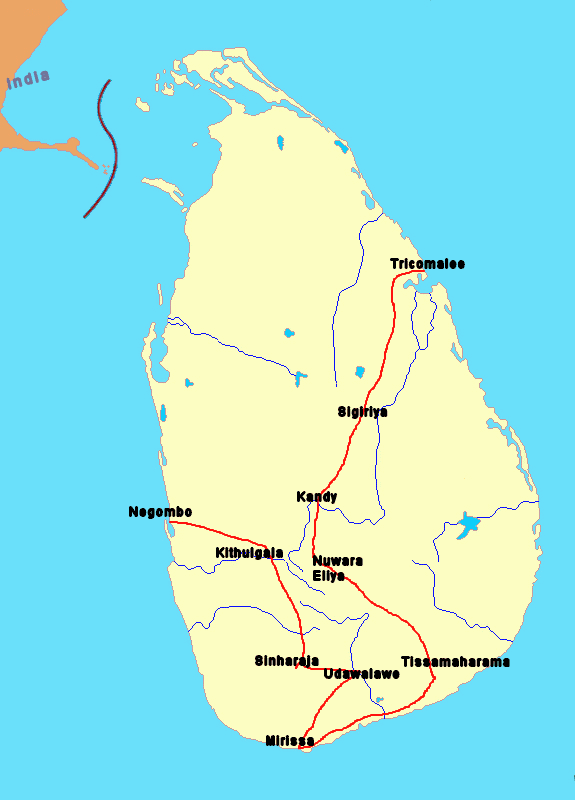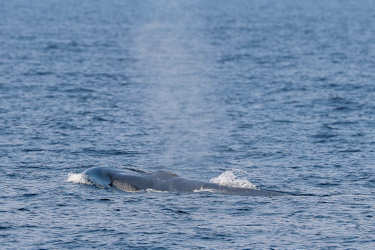Sri Lanka

Historie
Findings at Iranamadu indicate that there were Paleolithic people in Sri Lanka as early as 300.000 BC. There is definite
evidence of settlements by prehistoric people in Sri Lanka by about 125.000 BC.
The island appears to have been colonized by the Balangoda Man prior to 34.000 BC. They have been identified as a group of
Mesolithic hunter gatherers who lived in caves. Several of these caves including the well known Batadombalena and the
Pahiyangala Cave have yielded many artefacts that points to them being the first modern inhabitants of the island.
According to the Mahavamsa, written around 400 CE by the monk Mahanama, Vijaya and several hundred of his followers came
to Lanka after being expelled from an Indian kingdom. Prince Vijaya established the Kingdom of Tambapanni which existed from 543 BC
to 505 BC.
The Anuradhapura Kingdom was established in 380 BC during the reign of Pandukabhaya. There after, Anuradhapura served as the
capital city of the country for nearly 1.400 years.
Society underwent a major transformation during the reign of Devanampiya Tissa, with the arrival of Buddhism from India.
In 250 BC, Mahinda, the son of the Mauryan Emperor Ashoka and a bhikkhu (Buddhist monk) arrived in Mihintale carrying the
message of Buddhism. His mission won over the monarch, who embraced the faith and propagated it throughout the Sinhalese population.
In 245 BC, bhikkhuni Sangamitta arrived with the Jaya Sri Maha Bodhi tree, which is considered to be a sapling from the historical
Bodhi tree under which Gautama Buddha became enlightened.
Sri Lanka was the first Asian country known to have a female ruler: Anula of Anuradhapura (r. 47–42 BC).
Sri Lankan monarchs undertook some remarkable construction projects such as Sigiriya, the so-called "Fortress in the Sky", built
during the reign of Kashyapa I of Anuradhapura, who ruled between 477 and 495. The Sigiriya rock fortress is surrounded by an extensive
network of ramparts and moats. Inside this protective enclosure were gardens, ponds, pavilions, palaces and other structures.
The medieval period of Sri Lanka begins with the fall of Anuradhapura Kingdom. In AD 993, the invasion of Chola emperor Rajaraja I forced
the then Sri Lankan ruler Mahinda V to flee to the southern part of Sri Lanka. Taking advantage of this situation, Rajendra I,
son of Rajaraja I, launched a large invasion in 1017. Mahinda V was captured and taken to India, and the Cholas sacked the city of Anuradhapura.
Subsequently, they moved the capital to Polonnaruwa.
Following a seventeen-year-long campaign, Vijayabahu I successfully drove the Chola out of Sri Lanka in 1070, reuniting the country for
the first time in over a century. Sri Lanka's irrigation system was extensively expanded during the reign of Parăkramabăhu the Great
(1153–1186). This period is considered as a time when Sri Lanka was at the height of its power.
After his demise, Sri Lanka gradually decayed in power. In 1215, Kalinga Magha, a South Indian with uncertain origins, invaded and
captured the Kingdom of Polonnaruwa.
Sri Lanka never really recovered from the impact of Kalinga Magha's invasion. King Vijayabâhu III, who led the resistance, brought the
kingdom to Dambadeniya. The north, in the meanwhile, eventually evolved into the Jaffna Kingdom. The Jaffna kingdom never came
under the rule of any kingdom of the south.
The next three centuries starting from 1215 were marked by kaleidoscopically shifting collections of kingdoms in south and central Sri Lanka.
Lourenço de Almeida made the first Portuguese voyage to Ceylon in 1505 and established a settlement there. In 1517, the Portuguese built
a fort at the port city of Colombo and gradually extended their control over the coastal areas.
In 1592, after decades of intermittent warfare with the Portuguese, Vimaladharmasuriya I moved his kingdom to the inland city of Kandy,
a location he thought more secure from attack.
During the reign of the Rajasinghe II, Dutch explorers arrived on the island. In 1638, the king signed a treaty with the Dutch East
India Company to get rid of the Portuguese who ruled most of the coastal areas. The following Dutch–Portuguese War resulted in a
Dutch victory, with Colombo falling into Dutch hands by 1656.
In the late 18th century the Dutch, weakened by their wars against Great Britain, were conquered by Napoleonic France. No longer able to
govern their part of the island effectively, the Dutch transferred the rule of it to the British.
On 14 February 1815, Kandy was occupied by the British in the Second Kandyan War, ending Sri Lanka's independence.
Sri Vikrama Rajasinha, the last native monarch of Sri Lanka, was exiled to India.
The Sri Lankan Independence Movement was a peaceful political movement which aimed at achieving independence and self-rule for the country
from the British Empire. It succeeded when, on 4 February 1948, British Ceylon was granted independence within in the Commonwealth of
Nations that shared a monarch with Australia, Canada, New Zealand and the United Kingdom.
In 1972, the country became a republic within the Commonwealth, and its name was changed to Sri Lanka.
The Sri Lankan Civil War started on 23 July 1983, when there was an intermittent insurgency against the government by the Liberation
Tigers of Tamil Eelam, which fought to create an independent Tamil State in the north and the east of the island. After a 26-year
military campaign, the Sri Lankan military defeated the Tamil Tigers in May 2009, bringing the civil war to an end.
In elections held January 2015 Maithripala Sirisena was elected President.
I have visitted Sri Lanka in juli 2017
These are the places where i have been
Negombo
Kithulgala
Sinharaja
Udawalawe
Mirissa
Tissamaharama
Nuwara Eliya
Kandy
Sigiriya
Trincomalee
Please let me know when you're having questions.
i would be pleased to help you.
Things to do and other tips
